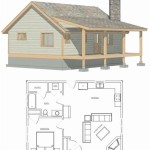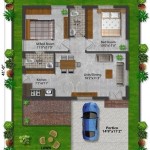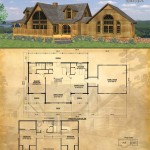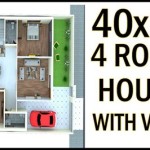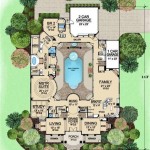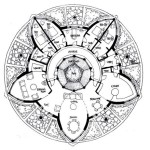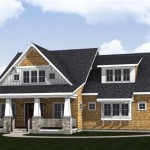Tiny House Log Cabin Floor Plans
The allure of a simpler life amidst nature draws many to consider tiny house living. Combining this lifestyle with the rustic charm of a log cabin creates a unique and appealing dwelling. Careful planning is paramount to maximizing space and functionality in a tiny log cabin. This article explores various floor plan considerations for those seeking to build a tiny house log cabin.
Key Considerations for Tiny Log Cabin Floor Plans
Several factors influence the ideal floor plan for a tiny log cabin. These include lifestyle needs, budget constraints, and the desired level of off-grid capability. Understanding these factors allows for informed decisions regarding space allocation and layout.
Space Optimization Strategies
Effective space optimization is essential in tiny house design. Loft spaces can serve as bedrooms or storage areas. Multi-functional furniture, such as sofa beds or tables with built-in storage, maximizes utility. Vertical space should be fully utilized with shelving and wall-mounted organizers.
Standard Tiny Log Cabin Layouts
Several standard layouts offer a starting point for planning a tiny log cabin. A single-room layout, featuring a combined living, sleeping, and kitchen area, is the most basic option. A loft layout adds a dedicated sleeping area above while maintaining an open living space below. A two-story layout offers more distinct separation between living and sleeping areas.
Benefits of a Loft Area
Incorporating a loft area significantly increases usable square footage without expanding the footprint of the cabin. Lofts provide a private space perfect for sleeping quarters or a home office. They also enhance vertical airflow, contributing to better ventilation and temperature regulation within the cabin.
Bathroom and Kitchen Considerations
Compact bathroom and kitchen designs are crucial for tiny log cabins. Corner sinks and showers maximize space efficiency in the bathroom. Compact appliances, such as mini-fridges and two-burner cooktops, are ideal for the kitchen. Creative storage solutions are essential for maintaining order and functionality in these areas.
Incorporating Outdoor Living Spaces
Extending living space outdoors is a valuable strategy for tiny homes. A deck or patio can create a dedicated area for dining, relaxation, or entertaining. Covered porches provide shelter from the elements and expand the usable living space year-round. Thoughtful integration of the outdoor space can significantly enhance the tiny cabin experience.
Material Selection and Construction Techniques
The choice of logs significantly impacts the construction process and overall aesthetic. Traditional full logs offer a rustic appearance but require more expertise to assemble. Milled logs provide a more uniform finish and are easier to work with. Prefabricated log cabin kits offer a convenient and often cost-effective building solution.
Planning for Utilities and Off-Grid Living
Careful consideration of utilities is crucial, particularly for off-grid cabins. Solar panels can provide electricity, while propane or wood stoves offer heating options. Composting toilets and rainwater collection systems contribute to sustainable off-grid living. Proper insulation is essential for maintaining comfortable temperatures and minimizing energy consumption.
Customizing Floor Plans to Individual Needs
Adapting standard layouts to meet individual needs is essential. Consider hobbies, work-from-home requirements, and storage needs when customizing the floor plan. Consulting with a builder or architect specializing in tiny houses can provide valuable insights and ensure a functional and personalized design.
Example Tiny Log Cabin Floor Plans
Several example floor plans can provide inspiration. A 200-square-foot plan might include a main floor with a combined living and kitchen area and a lofted sleeping area. A 400-square-foot plan could offer a separate bedroom on the main floor with a loft used as an office or guest space. Incorporating specific features, such as a covered porch or a larger bathroom, can further personalize the design.
Regulations and Building Codes
Researching local building codes and regulations is crucial before starting any construction project. Regulations regarding size, setbacks, and utilities vary by location. Obtaining necessary permits and approvals ensures compliance and avoids potential legal issues.
Budgeting for a Tiny Log Cabin
Creating a realistic budget is essential for a successful tiny house project. Factor in the cost of materials, labor, permits, and utilities. Exploring financing options and considering DIY projects can help manage expenses. Accurate budgeting allows for informed decision-making and helps avoid unexpected costs.
Maintenance and Upkeep
Log cabins require regular maintenance to preserve their beauty and structural integrity. Sealing the logs protects against moisture and pest damage. Regular inspections and repairs prevent small issues from becoming major problems. Proper maintenance ensures the longevity and enjoyment of the tiny log cabin.

Pin On Home Plans

Tiny Houses Living Large Southland Log Homes

Tiny Log Cabin Kits Easy Diy Project Small Cabins

Tiny Log Cabin Kits Easy Diy Project House Plans Design

Tiny Houses Living Large Southland Log Homes

Small Log Homes Kits Southland

Budget Log Cabin Kit Floor Plans House

11 Free Small Cabin Plans With Printable Log Connection

Taylor Log Cabin Floor Plans Small

Tiny Log Cabin Kits Easy Diy Project Craft Mart
Related Posts

